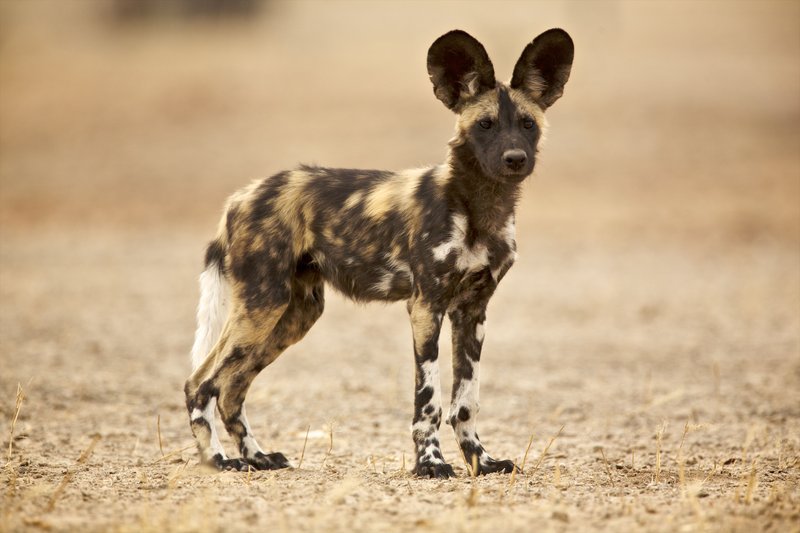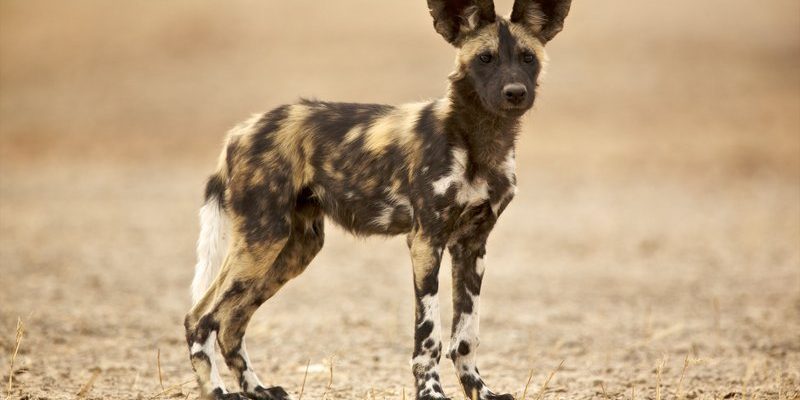
The African Wild Dog, also known as the painted wolf or Cape hunting dog, is one of the most fascinating yet endangered species in Africa. Imagine a group of uniquely patterned canines working together with remarkable teamwork; that’s exactly what these wild dogs do. With their large, rounded ears and coat adorned with a beautiful patchwork of colors, they’re as striking as they are social. But don’t let their charming appearance fool you—these dogs are fierce hunters, operating in packs to take down prey much larger than themselves.
You might be wondering just how these dogs have adapted to their environment and what challenges they face. Throughout the African savannas, they demonstrate extraordinary communication skills and cooperative hunting strategies that are simply captivating. Yet, despite their fascinating traits, they are facing severe threats from habitat loss and human activities. In this article, we’ll explore everything you need to know about these incredible creatures.
Physical Characteristics
The African Wild Dog is a medium-sized canine, with adults typically weighing between 40 to 75 pounds and standing about 24 to 30 inches tall at the shoulder. One of their most distinctive features is their coat, which is a stunning blend of black, brown, yellow, and white patches. This unique coloration helps them blend into the African landscape, making them effective hunters.
Their large, rounded ears serve a significant purpose. Not only do they help with hearing, allowing these dogs to pinpoint sounds while hunting, but they also help regulate body temperature. Given the hot climates they often inhabit, these ears play a crucial role in keeping them cool. When you see them flopping around as they run, it’s not just adorable; it’s a vital part of their survival.
You may also notice their long legs and lean bodies, which enable impressive speeds. These dogs can reach speeds up to 44 miles per hour, making them one of the fastest hunters in the animal kingdom. This agility, combined with their stamina, allows them to chase prey over long distances, exhausting their targets before making a calculated strike.
Habitat
African Wild Dogs thrive in a variety of habitats, predominantly in savannas, grasslands, and even arid regions. They prefer open environments where they can see far and wide—this is essential for spotting prey as well as avoiding potential threats. Their natural range stretches across sub-Saharan Africa, although their populations have significantly reduced due to fragmentation of habitat.
One crucial aspect of their habitat is the availability of prey. African Wild Dogs primarily hunt medium to large ungulates such as impalas, wildebeests, and antelopes. They rely on vast territories, often ranging from 150 to 1,000 square kilometers, depending on the population density of prey. With these extensive ranges, you can imagine how vital it is for them to have unbroken land to roam freely.
Unfortunately, as agricultural land expands and human settlements encroach upon their territories, the African Wild Dog faces increasing challenges. Roads can fragment their paths, and conflicts with livestock can lead to fatal outcomes for these beautiful animals. Conservation efforts are vital if we want to protect their natural habitats and ensure their survival.
Diet and Hunting Strategies
Typically, a pack will consist of about 2 to 27 individuals, and their social structure is quite complex. Each member plays a role, often dictated by age and ability. They communicate through a variety of vocalizations, body language, and even facial expressions. It’s a well-orchestrated performance where everyone knows their part, which is crucial during hunts where split-second decisions can mean the difference between success and failure.
After a successful hunt, the pack gathers to feast. Unlike many other predators, the African Wild Dog is known for its *sharing culture*. The alpha pair usually eats first, but they often regurgitate food for other members, especially the pups. This behavior strengthens social bonds within the pack and ensures that the younger members are well-fed and cared for.
Social Structure
The social life of the African Wild Dog is as intricate as their hunting strategies. They live in packs that are typically made up of family members, which can include a mix of related males and females. Packs generally have an alpha male and female who lead the group, and often, these two will be the only ones to breed, promoting stability and harmony within the pack.
Pack dynamics are fascinating. African Wild Dogs are incredibly social animals; they rely heavily on cooperation and communication. You might see them engaging in playful behavior, which is essential for building bonds and strengthening relationships. It’s not uncommon for them to greet each other with affectionate play bows or yips, keeping the energy high within the pack.
However, life isn’t always easy for these social creatures. Conflicts with rival packs can arise over territory or resources. These confrontations can be fierce, but the social structure of their packs often prevents unnecessary aggression. They prefer to solve conflicts diplomatically when possible, showcasing their intelligence and social acumen.
Conservation Status
The conservation status of the African Wild Dog is alarming, as they are currently classified as endangered by the IUCN. Their populations have declined dramatically over the past few decades, with estimates suggesting that there are fewer than 6,600 individuals left in the wild. This decline can be attributed to a mix of factors, including habitat loss, human-wildlife conflict, and diseases like canine distemper that affect their populations.
To combat these threats, various conservation efforts are underway. Wildlife reserves and national parks provide safe havens where these dogs can live and hunt without the pressures of human encroachment. Organizations around the world are also working on raising awareness about the importance of the African Wild Dog in the ecosystem and the need for habitat preservation.
One of the key strategies for protecting African Wild Dogs involves creating wildlife corridors—these are safe passages that allow them to move between their territories without facing dangers posed by roads and urban developments. Education and community engagement initiatives are also critical, as local communities are often the first line of defense against habitat loss and poaching.
Interesting Facts
| Fact | Details |
|---|---|
| Scientific Name | Lycaon pictus |
| Average Litter Size | 4 to 6 pups |
| Lifespan | 10 to 12 years in the wild |
| Social Structure | Highly social, living in packs led by a dominant pair |
| Hunting Style | Cooperative hunters using stamina to tire out prey |
FAQs
What do African Wild Dogs eat?
African Wild Dogs primarily consume small to medium-sized ungulates. Their diet often includes species like antelopes, wildebeests, and even smaller animals like hares. Their cooperative hunting style allows them to tackle prey larger than themselves, using their stamina to chase and wear down their targets before making the kill. This technique is not only effective but showcases their intelligence and teamwork.
How fast can African Wild Dogs run?
These remarkable creatures can reach speeds of up to 44 miles per hour! Their long legs and lean bodies make them incredibly agile and well-suited for extended chases. Unlike some other predators that rely on short bursts of speed, the African Wild Dog’s endurance allows them to pursue prey over long distances, ultimately exhausting their quarry before making a final strike.
Are African Wild Dogs social animals?
Absolutely! African Wild Dogs are known for their strong social structure. They typically live in packs that can range from a couple of individuals to over twenty. Each pack is led by an alpha male and female, and these dogs communicate through various vocalizations, body language, and even playful behavior. Their social bonds are so strong that they are often seen playing and grooming each other, which helps to reinforce their relationships.
What is the current conservation status of African Wild Dogs?
African Wild Dogs are classified as endangered by the IUCN, with fewer than 6,600 individuals remaining in the wild. Their populations have been severely impacted by habitat loss, human-wildlife conflict, and diseases like canine distemper. Various conservation efforts are underway to protect these animals, including creating wildlife corridors and raising awareness about their plight.
Why are they called painted wolves?
The nickname “painted wolf” comes from the unique coloration of their coats, which features a beautiful patchwork of colors, including black, brown, and creamy yellow. This striking appearance is not just for show; it helps them blend seamlessly into their natural surroundings, making them effective hunters in the wild.
How do African Wild Dogs reproduce?
The breeding system of African Wild Dogs is quite interesting. Typically, only the alpha pair in the pack will mate, which helps maintain social order and stability within the group. After a gestation period of about 70 days, the female gives birth to a litter of 4 to 6 pups. The entire pack takes care of the pups, ensuring they grow strong and learn the skills needed for survival.
What threats do African Wild Dogs face?
African Wild Dogs face numerous threats, primarily due to human activities. Habitat loss is a significant concern, as agriculture and urban expansion encroach on their ranges. Additionally, conflicts with livestock can lead to retaliatory killings. Diseases like canine distemper and rabies can also severely impact their populations, making conservation efforts even more critical.
How can we help African Wild Dogs?
You can help African Wild Dogs by supporting conservation organizations that focus on habitat preservation and protection efforts. Additionally, raising awareness about the challenges these animals face can encourage more people to become involved in conservation efforts. Whether through donations or volunteering, every little bit helps ensure the survival of this incredible species.
In which countries can African Wild Dogs be found?
African Wild Dogs range across various countries in sub-Saharan Africa, including Botswana, Zimbabwe, Tanzania, and Kenya. However, their populations have become increasingly fragmented due to habitat loss and human interference. National parks and reserves are vital to their survival, providing safe havens where they can hunt and thrive.
How long do African Wild Dogs live in the wild?
In the wild, African Wild Dogs typically live for about 10 to 12 years. However, various factors, including predation, disease, and human impacts, can affect their longevity. In contrast, those in captivity may live longer, thanks in part to consistent food supply and absence of predators.

